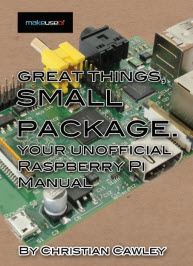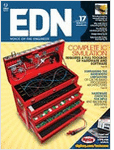How To Reliably Protect CMOS Circuits Against Power Supply Overvoltaging


There are two situations where the single TransZorb scheme, across the positive and negative supplies, will not always protect the device. The first of these, already mentioned above, is where one of the supplies cannot sink or source the additional current which flows during a spike or when either of the supplies does not present a low output impedance during the spike. lt should be noted here that while the power supply may present a low output impedance under steady-state conditions, its impedance during turn-on or turn-off may be different. Using the aame example as before, if the -15 V supply cannot sink the required spike current, it means that the negative supply is no longer at -15 V. The TransZorb will still clamp the two supplies together so the breakdown path between the two supplies is protected. However, the absolute value of either supply is no longer clearly defined. lf we assume that the -15V goes to, say, -5 V because it cannot sink the current, it means that the positive supply goes to +15 V. This will possibly exceed the breakdown path between the positive supply and ground and lead to damage to the device.
The second situation is where the spikes occur on the ground line and not on either on the power supply rails. A positive spike of +10 V on the ground line, for example, would not cause the TransZorb to turn on, yet the voltage difference between ground and the negative supply is now 25 V, and this could exceed the breskdown voltage between the negative rail and ground.
In these situations, the two TransZorb scheme, shown ln figure 4, is recommended. This two TrensZorb scheme protects against voltage spikes on the ground and also protects the device in cases where either of the supplies is not capable of sinking or sourcing the additional current which flows during the spike. This schema ensures that each supply is independently protected and the spike current flows to ground. This scheme protects the breakdown path from each supply in the same manner as outlined for single supply systems. By protecting each supply, the breakdown between the two supplies is also protected, and so all three possible breakdown paths are guarded against. Suitable Trans2orb values for common power supply voltages are as par Table I.
SWTTCHING MODE POWER SUPPLIES/NOISY ENVIRONMENTS
Another situation, other than power on, where spiking of the supplies can occur is in applications using switching mode power supplies. Although the switching mode power supply may be regulated, the regulation may not be sufficient to remove spikes as low as 1 uS duration, lf these spikes have sufficient magnitude and energy, they also can cause damage to the device. Other potential problem araas are applications in environments which are inherently noisy and produce spikes on power supply and ground rails. Examples of this type of application are operating devices in the presence ot large motors or operating the devices in industrial environments. The schemes recommended in Figures 2, 3 and 4 for tur-on/turn-off spikes are equally applicable to protecting against switching-mode power supply spikes or power supply spikes generated in noisy environments.
The TransZorb schemes shown in this article protect the device against overvoltaglng of the power supplies. It will not prevent damaged being caused to the device when recommended power supply sequencing is not obeyed. Consult the absolute maximum ratings section in the manufacturer’s data sheet to see if there is a particular power supply sequence for a device or if the digital inputs cannot be powered before the supplies.






